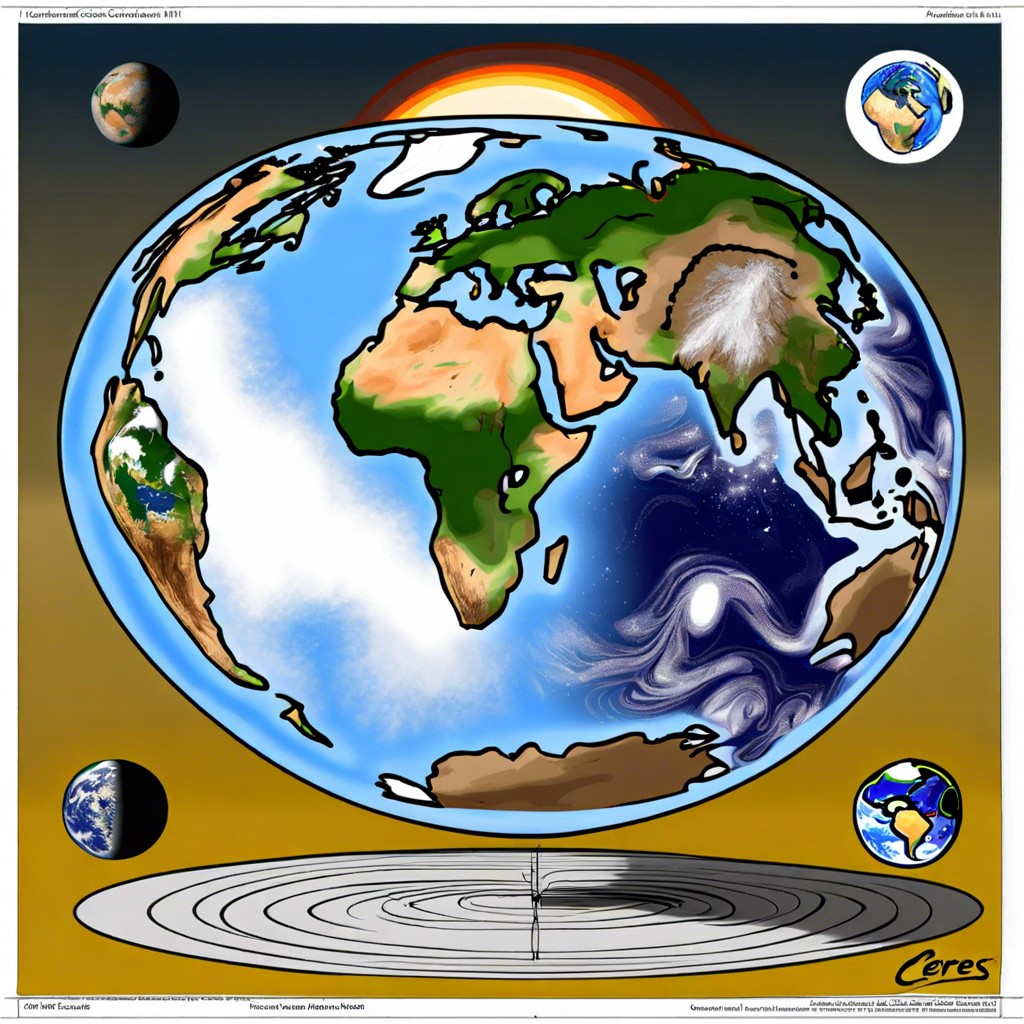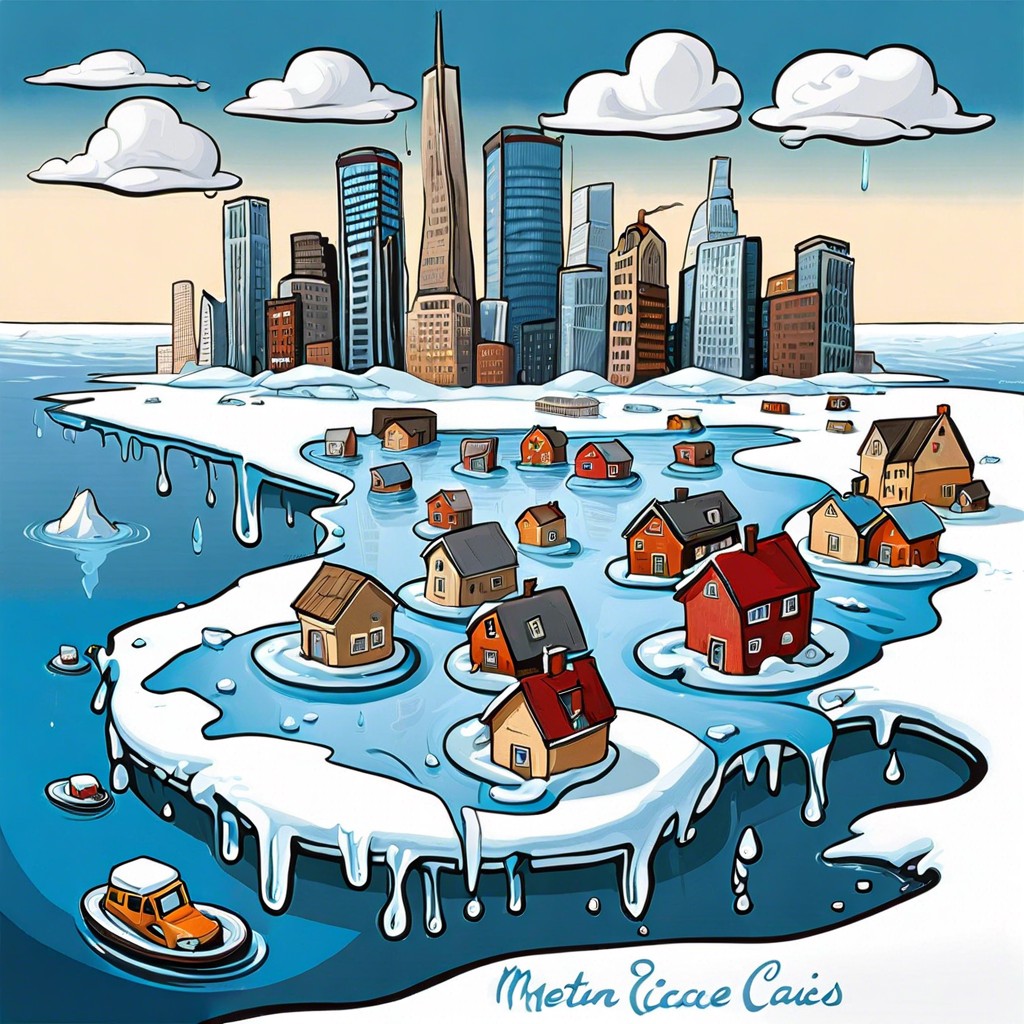If Ceres collided with Earth, the impact would be catastrophic, causing massive destruction and drastically altering our planet’s environment.
Imagine the largest asteroid in the asteroid belt, Ceres, deciding to pay Earth an unwelcome visit. Curious about the jaw-dropping chaos that might follow? From obliterating impact zones to icy tsunamis and shattering earthquakes, we’ll dive into the apocalyptic details. Ready to explore the cataclysmic effects, possible climate crises, and far-fetched survival scenarios? Buckle up, because this thrill ride is just getting started!
Key takeaways:
- Impact Force: Massive destruction, fires, shockwaves, tsunamis.
- Global Climate: Dust clouds, Ice Age, volcanic eruptions, gases.
- Tsunamis/Quakes: Mega-tsunamis, earthquakes, land upheaval, chaos.
- Ecological Impact: Extinction, plants, animals, diseases, marine life.
- Survival Scenarios: Bunkers, food shift, tech upgrades, global cooperation, evolution.
Impact Force and Immediate Effects

Imagine a behemoth rock, roughly 580 miles in diameter, slamming into Earth. The immediate cacophony would be ear-splitting (if anyone were still around to hear it, of course). Let’s break down what that would entail:
First, the kinetic energy released would dwarf any bomb we’ve ever devised. At impact, the collision energy would be astronomical, potentially equivalent to billions of atomic bombs detonating simultaneously. Imagine that for a moment—makes your morning coffee spill seem a tad insignificant, doesn’t it?
Debris from the impact site would be launched into the atmosphere, darkening the sky faster than any Monday morning ever could. This airborne debris wouldn’t be a mere inconvenience; think of it as nature’s ultimate smoke machine, blocking sunlight for several days or weeks.
The heat generated would ignite intense fires, vaporizing everything in proximity to the impact site and possibly even creating vast lava flows. This isn’t your typical campfire scenario. We’re talking entire landscapes being incinerated in seconds.
Then, shockwaves. Picture these as Earth’s very own version of a really, really bad day. Shockwaves would ripple out from the impact point, causing unprecedented seismic activity. So much so, you’d likely feel it halfway across the globe.
Finally, for those near coastlines, brace yourself—mega-tsunamis would surge like enormous watery fists, obliterating everything in their path. Think surfing, but the waves are 3,000 feet high and a bit more murderous.
Global Climate Disruption
Picture this: a massive dust cloud choking the sky, blocking out sunlight. Temperatures plummet. Plants can’t photosynthesize; crop failure is rampant. Earth’s climate hits the reset button—Ice Age 2.0, anyone?
Let’s dive into other fun effects. Volcanic eruptions? Yep, the jolt could trigger those too, adding even more ash and gases into the atmosphere. Acid rain would become a delightful, albeit horrifying, new normal.
And don’t forget the greenhouse gases. CO2 levels could skyrocket from fires and decaying matter. Expect some wild temperature swings before things even think about settling down.
In short, it’s like giving Mother Nature an unhealthy dose of espresso and watching her go bananas.
Tsunamis and Earthquakes
Imagine the biggest stone you’ve ever thrown into a pond. Now multiply that by a gazillion. That’s the effect a Ceres impact would have on Earth’s oceans. Mega-tsunamis would ricochet across the globe, like an angry Poseidon having a tantrum. Coastal cities? Toast.
With shockwaves spreading through the planet’s crust, earthquakes would follow with gusto. Major tectonic plates shifting, cities crumbling like they’re made of cards. Think continental gymnastics, except no one’s getting a gold medal.
Even inland, the ground wouldn’t be safe. Secondary shocks could see fault lines hiccupping all over. And if you thought California had shaking troubles before—well, bless your innocent heart. Seas rising, ground splitting, chaos reigning. But hey, at least surfing would get a thrilling upgrade, if you survive to tell the tale.
Long-term Ecological and Biological Impact
Imagine if you woke up one morning and your favorite breakfast cereal had gone extinct. A giant space rock like Ceres slamming into Earth would have a similar effect on, well, everything living.
Here’s the deal: first off, plants! They might take a big hit from drastic changes in climate, and no sunlight thanks to all that debris blocking it out. Farming? Out the window. Say goodbye to avocado toast.
Next, animals. Survival would depend on adaptability. Sadly, fluffy bunnies and majestic eagles aren’t known for their expertise in post-apocalyptic survival.
Let’s not forget diseases. Ecosystem imbalances could potentially give rise to new, more virulent pathogens. Your immune system had better be ready.
Marine life isn’t spared, either. Acidified, warmer oceans spell doom for many species—mutant fish, while interesting, aren’t a great substitute for the ones we’re used to.
Lastly, human health takes a nosedive. Respiratory issues from a dusty atmosphere, food shortages, and stress would quickly become the new normal. Time to dust off those survival skills.
Human Survival and Adaptation Scenarios
Imagine waking up to a sky perpetually tinged in hues of orange and red, like you’re living in a post-apocalyptic Instagram filter. Beyond surviving the initial chaos, humanity would need to rapidly adapt to a new world.
First off, underground bunkers would become the new hot real estate. Forget beachfront properties; subterranean living is where it’s at.
Food production would shift dramatically. Hydroponics and vertical farming inside fortified structures would be essential. Say goodbye to idyllic farm life and hello to nutrient-packed algae smoothies.
Travel and communication would need a serious upgrade. Expect a boom in resilient, off-grid technologies. Think solar-powered drones delivering your new batch of hydroponic kale.
Then there’s the small matter of global cooperation. Could humanity actually pull together long enough to rebuild? A whole new level of diplomacy would be required; you’d probably see more handshaking and fewer trade wars.
Finally, let’s not forget evolution itself. Over generations, humans could develop resistance to harsher environmental conditions. Love at first sight might become love at first sight with a gas mask.
And hey, at least we’d finally have a reason to use those dystopian survival skills we learned from binge-watching sci-fi series!




